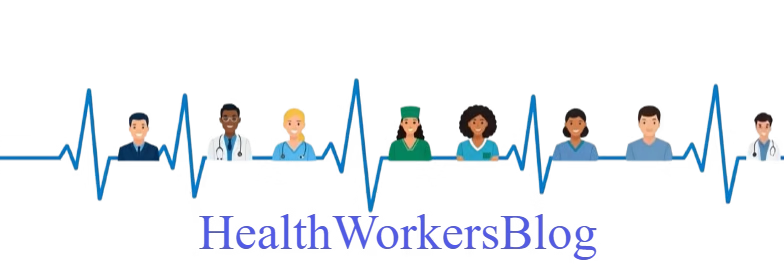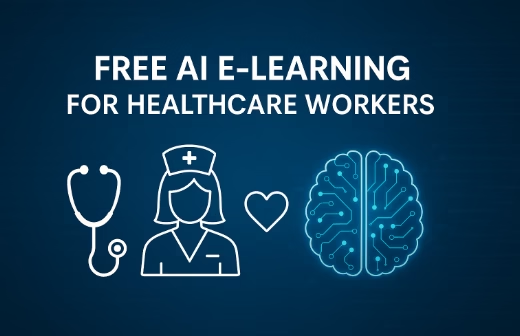Hey everyone! Ever feel like technology is moving at lightning speed? You’re not alone! One of the most talked-about (and sometimes confusing) advancements is Artificial Intelligence (AI). If you’ve heard terms like ChatGPT or Gemini but aren’t quite sure what they are, how they work, or how they could possibly relate to your nursing practice, this post is for you.
Let’s break down what AI is, where it came from, what it can do today, and how you can start learning to use these powerful new tools – while also understanding their limitations.
What Exactly is Artificial Intelligence?
At its core, Artificial Intelligence refers to the ability of computers or machines to mimic human intelligence. This means they can learn, reason, problem-solve, perceive, understand language, and even make decisions.
Think of it like this: traditional software follows explicit, pre-programmed instructions. AI, on the other hand, can learn from data and improve its performance on tasks over time, often without being explicitly programmed for each specific variation.
Key types of AI you might encounter:
- Reactive Machines: The most basic type. They can’t form memories or use past experiences to inform current decisions. Think of an AI that plays chess – it reacts to the current board.
- Limited Memory AI: These systems can retain information from past experiences for a short period. This is the category most AI applications we use today fall into, including many self-driving cars or chatbots.
- Theory of Mind (Future): This AI would understand human thoughts, emotions, beliefs, and expectations – a level of AI we haven’t achieved yet.
- Self-Awareness (Future): This is the stuff of science fiction for now – AI that has its own consciousness and self-awareness.
For our purposes as nurses, we are mostly interacting with Limited Memory AI, particularly in the form of Machine Learning (ML) and Natural Language Processing (NLP).
- Machine Learning (ML): This is a subset of AI where systems “learn” from large amounts of data without being explicitly programmed. For example, an ML model could be trained on thousands of medical images to help identify patterns indicative of a certain disease.
- Natural Language Processing (NLP): This enables computers to understand, interpret, and generate human language. Think of virtual assistants, translation software, and, importantly, AI chatbots like ChatGPT and Gemini.
A Quick Trip Through Time: The Journey of AI
The idea of creating intelligent machines isn’t new. Philosophers in ancient times pondered automatons. However, the field of AI as we know it really began to take shape in the mid-20th century:
- 1950s: The Dawn of AI. Alan Turing, a brilliant mathematician, proposed the “Turing Test” to determine if a machine could exhibit intelligent behavior indistinguishable from a human. The term “Artificial Intelligence” was coined by John McCarthy in 1956 at the Dartmouth Conference, which is considered the birth of AI as a field. Early AI explored problem-solving and symbolic reasoning.
- Early Enthusiasm & “AI Winters”: The following decades saw periods of rapid advancement fueled by optimism, followed by “AI winters” where funding and interest waned due to overly ambitious promises not meeting reality and limitations in computing power.
- 1980s: Rise of Expert Systems. These systems aimed to replicate the decision-making ability of a human expert in a specific domain, like medical diagnosis (e.g., MYCIN for blood infections).
- 1990s-2000s: Machine Learning Takes Hold. With increased computing power and the availability of vast amounts of data (hello, internet!), machine learning algorithms started to flourish. This led to breakthroughs in areas like image recognition and speech recognition.
- 2010s-Present: Deep Learning and Generative AI. A subfield of machine learning called deep learning, which uses neural networks with many layers, has driven many of the recent AI advancements. This has led to the rise of Generative AI – AI that can create new content, such as text, images, audio, and code. This is where tools like ChatGPT (OpenAI) and Gemini (Google) come in. These are Large Language Models (LLMs), trained on massive datasets of text and code, enabling them to understand and generate human-like text in response to prompts.
Today, AI is capable of remarkable feats, from diagnosing diseases with greater accuracy in some cases to powering sophisticated virtual assistants and even composing music or creating art.
What Can AI Do NOW? Current Capabilities (Especially in Healthcare)
AI is no longer just a research concept; it’s being integrated into various sectors, including healthcare. Here’s a glimpse of its current capabilities:
- Administrative Tasks:
- Streamlining Workflows: Automating scheduling, billing, and patient record management.
- Documentation: AI-powered scribes can listen to doctor-patient conversations and help draft clinical notes, reducing the documentation burden.
- Voice-to-Text Dictation: Improving the speed and accuracy of clinical documentation.
- Diagnostics & Treatment:
- Medical Imaging Analysis: AI algorithms can analyze X-rays, CT scans, and MRIs to help detect anomalies like tumors or fractures, sometimes with accuracy comparable to or even exceeding human radiologists.
- Early Disease Detection: Identifying subtle patterns in patient data that might indicate early signs of diseases like sepsis or cardiac events.
- Personalized Medicine: Analyzing a patient’s genetic makeup, lifestyle, and clinical data to help tailor treatment plans.
- Drug Discovery: Accelerating the process of identifying and developing new medications.
- Patient Engagement & Support:
- AI-Powered Chatbots: Providing patients with information, answering common questions, and helping with medication reminders or appointment scheduling.
- Remote Patient Monitoring: AI can analyze data from wearable devices to monitor patients’ vital signs and alert healthcare providers to potential issues.
- Research & Education:
- Data Analysis: Processing and analyzing vast datasets for medical research much faster than humans can.
- Educational Tools: AI can create personalized learning experiences for medical and nursing students, generate quizzes, and even simulate patient interactions for training.
For nurses specifically, AI tools can be powerful assistants, helping to:
- Quickly find information: Summarize research papers, explain complex medical conditions in simple terms, or provide drug information.
- Draft communications: Help write patient education materials, emails to colleagues, or even care plan notes (always for review and editing, of course!).
- Brainstorm ideas: Generate suggestions for patient care interventions or educational content.
- Learn and develop: Clarify concepts, explore case studies, and stay updated on best practices.
Meet Your AI Assistants: ChatGPT, Gemini, and More
You’ve likely heard of these names. They are at the forefront of the current AI revolution, particularly in the realm of generative AI and LLMs:
- ChatGPT (by OpenAI): One of the most well-known AI chatbots. It excels at generating human-like text, answering questions, writing different kinds of creative content, summarizing information, and even helping with coding.
- Gemini (by Google): Google’s advanced conversational AI model. It’s designed to be multimodal (can understand and process different types of information like text, code, images, and eventually video and audio). Gemini aims to be a helpful collaborator for tasks like brainstorming, writing, learning, and planning.
- Other Notable AI Tools:
- Microsoft Copilot: Integrates AI assistance across Microsoft 365 apps.
- Grammarly: Uses AI to help improve writing clarity, grammar, and style.
- Otter.ai: An AI transcription service for meetings and interviews.
- Perplexity AI: An AI search engine that provides answers with cited sources.
These tools generally work through a prompt-based interface. You type a question or instruction (the “prompt”), and the AI generates a response.
How Can You Learn to Use These AI Tools? Getting Started!
The good news is that many of these tools are designed to be user-friendly. If you can send an email or use a search engine, you can start using AI chatbots.
- Access the Tools:
- ChatGPT: Go to the OpenAI website (chat.openai.com). There’s a free version and a paid subscription with access to more advanced models.
- Gemini: You can access Gemini through its web interface (gemini.google.com) or integrated into various Google products. Google also offers different tiers, including free access.
- Start Simple:
- Ask it general knowledge questions.
- Ask it to explain a complex topic in simple terms (e.g., “Explain the pathophysiology of Type 2 Diabetes in simple terms for a patient”).
- Ask it to draft a simple email or a list.
- Experiment with Prompts: The key to getting useful responses from AI is learning how to write good prompts. A prompt is your instruction to the AI.
- Be Specific: Instead of “Write about heart failure,” try “Write a 3-paragraph summary of the main symptoms and lifestyle recommendations for a patient newly diagnosed with congestive heart failure, using clear and empathetic language.”
- Provide Context: If you want the AI to adopt a certain role, tell it! “You are a patient educator. Explain…”
- Set Constraints: Specify the desired length, format (e.g., bullet points, paragraph), tone (e.g., formal, friendly, professional), and audience.
- Iterate: If you don’t get what you want the first time, refine your prompt and try again. Ask follow-up questions.
- Explore Use Cases Relevant to Nursing:
- “Draft a patient education handout on managing hypertension.”
- “Summarize the key findings of this research abstract [paste abstract].” (Be mindful of privacy if pasting sensitive info).
- “Create a list of potential nursing diagnoses for a patient presenting with shortness of breath and edema.” (Remember, this is for brainstorming, not definitive diagnosis).
- “Explain a common lab test (e.g., HbA1c) in a way a patient can understand.”
Learning More About Prompts: Your Key to Unlocking AI
Mastering prompt engineering (the art of crafting effective prompts) will significantly enhance your ability to use AI tools. Here are some great places to start learning:
- Google’s Prompting Essentials: Google offers free courses and resources on how to write effective prompts. Search for “Google Prompting Essentials” or “Grow with Google AI.”
- OpenAI’s Resources: OpenAI provides documentation and examples for using their models, including ChatGPT. Check their official website.
- DAIR.AI Prompt Engineering Guide: A comprehensive guide with lots of examples and links to research papers.
- Microsoft’s Prompt Engineering Guides: Microsoft offers resources for learning both fundamental and advanced prompting techniques, often in the context of their Copilot tools.
- Online Courses: Platforms like Coursera, edX, and LinkedIn Learning have courses on AI and prompt engineering. Vanderbilt University offers a popular course on “Prompt Engineering for ChatGPT.”
General Tips for Better Prompts:
- Clarity is King: The clearer your instruction, the better the AI’s output.
- Role-Playing: Assign a role to the AI (e.g., “Act as a compassionate nurse explaining a procedure…”).
- Use Examples (Few-Shot Prompting): Provide an example or two of the kind of output you want.
- Break Down Complex Tasks: For complicated requests, break them into smaller, simpler prompts.
- Refine and Iterate: Don’t expect perfection on the first try. Treat it as a conversation.

The Catch: False Negatives, Limitations, and Ethical Considerations
While AI offers incredible potential, it’s crucial to approach it with a critical and informed perspective. These tools are not infallible.
- “Hallucinations” or Fabricated Information: LLMs can sometimes generate text that sounds plausible but is factually incorrect or nonsensical. They might “make up” information, references, or even entire studies. Always critically evaluate and verify information from AI, especially in a clinical context.
- Bias: AI models are trained on vast datasets. If this data contains biases (e.g., underrepresentation of certain demographic groups), the AI can perpetuate or even amplify these biases in its outputs. This can have serious implications in healthcare, potentially leading to disparities in care or inaccurate risk assessments for certain populations.
- Lack of True Understanding and Common Sense: While AI can process language and generate text, it doesn’t “understand” concepts or possess common sense in the human way. It’s pattern matching on a massive scale.
- False Negatives (and False Positives) in Diagnostics:
- In a medical context, a false negative is when an AI tool (or any test) incorrectly indicates that a condition is absent when it is actually present (e.g., an AI analyzing a mammogram fails to detect cancer that is there). This can lead to delayed diagnosis and treatment.
- A false positive is when the AI incorrectly indicates a condition is present when it is not (e.g., flagging a healthy patient as having a disease), leading to unnecessary anxiety, further testing, and costs.
- Understanding the sensitivity and specificity of AI diagnostic tools is vital. No AI is 100% accurate.
- Data Privacy and Security: AI systems, especially in healthcare, handle vast amounts of sensitive patient data. Ensuring robust data privacy and security measures is paramount to comply with regulations like HIPAA and GDPR and to maintain patient trust.
- Over-Reliance and Deskilling: There’s a risk that over-reliance on AI could lead to a decline in critical thinking and clinical reasoning skills among healthcare professionals. AI should be a tool to augment human expertise, not replace it entirely.
- Transparency and Explainability (The “Black Box” Problem): For some complex AI models (especially deep learning), it can be difficult to understand how they arrived at a particular decision or output. This “black box” nature can be problematic in healthcare, where understanding the reasoning behind a diagnosis or treatment recommendation is crucial.
- Ethical Use:
- Accountability: Who is responsible if an AI makes an error that leads to patient harm? The developer? The hospital? The clinician who used the tool?
- Patient Consent: How and when should patients be informed that AI is being used in their care?
- Equity of Access: Will AI tools exacerbate existing health disparities if they are not accessible or affordable to all?
- The American Nurses Association (ANA) has published position statements on the ethical use of AI in nursing practice, emphasizing the nurse’s responsibility to ensure validity, appropriate application, transparency, and ongoing evaluation for reliability.
As nurses, our critical thinking, clinical judgment, empathy, and ethical compass remain irreplaceable. AI is a powerful tool, but it’s just that – a tool. It’s up to us to use it wisely, ethically, and always in the best interest of our patients.
The Future is Collaborative
AI is set to become an increasingly integral part of healthcare. By understanding its capabilities and limitations, and by learning how to interact with these new technologies, nurses can harness the power of AI to enhance patient care, streamline workflows, and contribute to the advancement of our profession.
Don’t be intimidated! Start small, be curious, and always keep learning. The future of nursing will likely involve a collaborative relationship between human expertise and artificial intelligence, working together to achieve better outcomes for all.
On this website, we will be working on AI journey to support growth.




Very Beautiful and Insightful. Well done ✅
Very insightful and educating.